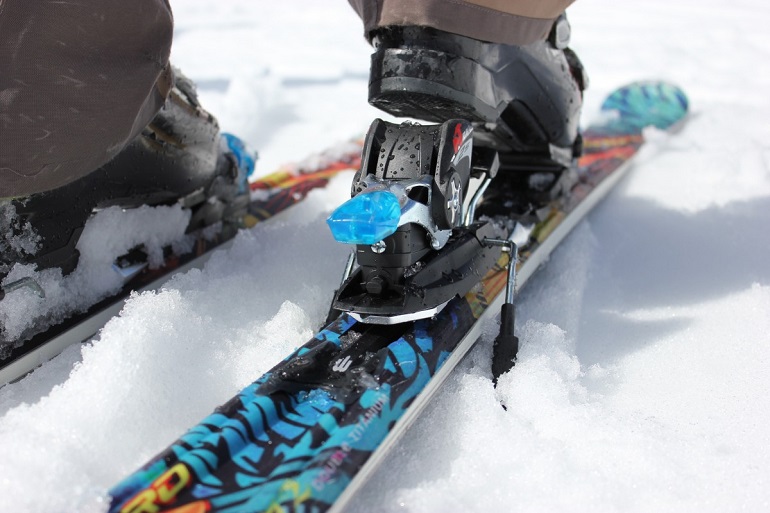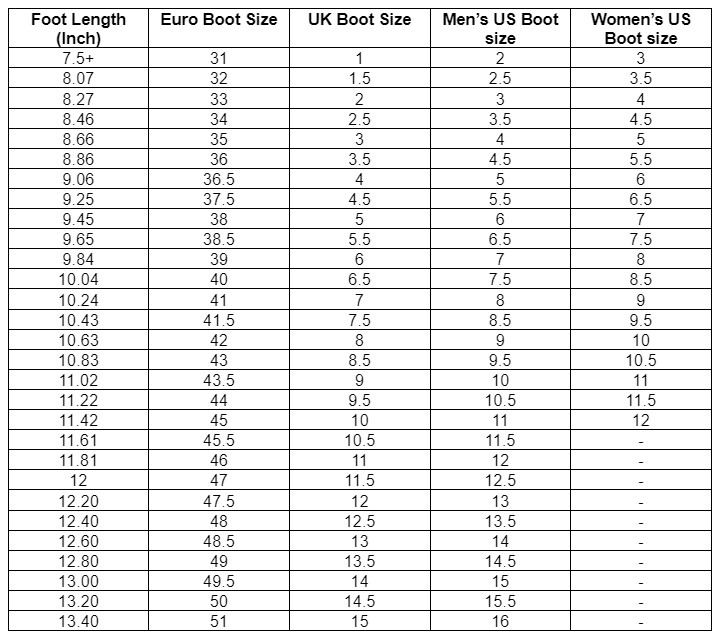Let me tell you a pitiable story, I was buttering the piste, my style was freestyle, the board- shorter and forgiving, when I tried nailing the jump, my feet went numb, and the rest is history. But wearing a splint or a walking boot is my present.
So, before you laugh at my misery, let me tell you that a tight-fit or loose binding can rob you of your Colgate smile or a twerking wrist. Can you compromise swanking the Swarovski bracelet?
Bindings are often treated like the middle child in a snowboard setup. The irony is that it makes a big difference if you end up making a bad choice.
The right bindings will support your style, embrace the selected terrain, and it will keep you from knocking the hell out of the person who suggested this recreational activity in the first place. Life is short, be a Chicagoan.
In this article, you’ll find everything you need to know on how to pick a perfect snowboard binding and how to avoid the stress of comprehending a doctor’s handwriting.
How To Choose the Right Size Snowboard Bindings
The key is to acknowledge your style first and then is to find a binding that complements your snowboarding boots and your board. I mean, there is no point in having stiff flex boots and soft bindings and vice versa, as it throws the purpose out of the window.
The flex of both snowboard boots and bindings must closely match for a tailored, exhilarating ride.
Your choice of snowboard binding can be narrowed to the below-mentioned riding styles. Let’s see in which style you ride and what type of bindings stand suitable for your journey.
Freeride
Free riding is all about riding off-piste (backcountry) and in powder. It includes riding all of the mountains and hitting natural features to perform tricks.
Bindings used in this category have a stiffer flex for better response and control. On a scale of 1-10, these boards usually fall between the range of 7-10.
The very main reason behind its being stiff is it shows better edge-hold, which means one needs stiff flex bindings to get the job done. The term edge-hold represents stunts like carving and attacking steeps.
Another reason is that a stiffer board with a hard flex binding tends to be more responsive when a rider negotiates trees and narrow chutes. Moreover, such a pair do magic as it has to offer bags of stability.

Recommendation: StiffER Bindings
Freestyle
Freestyle demands soft flex bindings, boots, and boards. Typically, a medium flex combo of these three can do wonders. If you are wondering about the flex rate, it should be between 4-6 out of 10 on the scale if you want to enjoy more extreme jumps.
Medium flex bindings are easy to maneuver, butter and press, and easy to throw around for spins, tricks, and jibbing. Such bindings combined with soft flex boards offer plenty of forgiveness.
Recommendation: SOFTER Binding
All-Mountain
All-mountain snowboards are manufactured in a way to handle different kinds of ride styles, in fact, all kinds of terrains and styles. The complementary bindings to these boards should also show much flexibility.
The all-mountaineers desire one board that is a jack of all trades. No doubt, money is not always in the bank.
So, a perfect binding for such a purpose must have a medium flex to make it work for all kinds of styles and terrains. As I mentioned earlier, the all-mountain style includes exploring whatever may come your way, be it powder, pipe, groomed runs, or pipe, the riders choose bindings that also comply with their skill level.
For instance, if you are good with tricks and stunts and you cannot move a bit without boasting acrobatics, you may want to go with a softer or medium flex. But, if you are fast and furious and need speed, you will choose a stiff flex board and binding.
In general, all-mountain boards and bindings typically share a medium flex as it allows them to carve the snow at high speeds, and hold an edge, while staying forgiving enough to let you perform tricks if you want.
Recommendation: Medium Flex Binding
Snowboard Binding Size Chart
To your surprise, there is no industry standard for binding sizing, as all bindings are manufactured using US sizes. The table given doesn’t guarantee you get a perfect size, but it may help you as a good starting point, and it may assist you in finding a pretty accurate bindings size.
If you don’t want any nuisance at all in finding the right shoe size and binding size, you must try your boots in the bindings in person if it is possible.
If this idea seems stupid because we are the product of a modern world of online shopping, then try emailing a store and asking them if they can put together a pair of boots and compatible bindings.
It will save your day and money. Well, most bindings are sized small, small-medium, medium, medium-large, and extra-large.

Binding Types
There are basically two types of bindings that you can choose snowboard bindings from. Let’s see what are they and how one is different from the other.
Traditional Strap Bindings
Strap bindings are the most common kind of snowboard bindings. They feature straps for their closure system to secure your feet in the boots and make them stay in place. The high back component of the bindings does not move from its place.
Such bindings feature several adjustment options for exceptional support, superior functionality, and better comfort through cushioning. These snowboard bindings can be adjusted as you desire.
The only drawback in using traditional strap bindings is that its closure system is outdated, as manually buckling/strapping and unbuckling/unstrapping may come as a nuisance. It is time-consuming, especially when you are wearing wrist guard snowboarding gloves on cold, snowy terrains.
You just need to unstrap it, slide your foot in, and tighten the straps, then you are good to go. Generally speaking, these bindings are suitable for both soft and medium flex boots.
Rear-Entry Bindings
The rear entry bindings make a mark with their reinforced highbacks and single strap at the toe. Although they look similar to traditional strap bindings, they possess reclining highbacks that permit easy donning and doffing.
This easy access changes the game, as it saves you a lot of time and doesn’t prove to be cumbersome.
These bindings are also named speed-entry bindings, for it is easy and speedy to put on. These bindings excellently stabilize your feet with the help of a yoke system that applies optimum pressure uniformly across the forefoot.
These bindings come a bit heavier than the traditional ones. One needs to pop open the highback, slide the foot in, adjust the straps for optimum performance and then close the highback. These bindings are generally suitable for both hard and soft flex boots.

Size: Does My Boot Fit Properly in My Binding?
Your boots must fit in the bindings snugly and securely, leaving little space on either side of your foot. The boots should neither sway in the bindings when excessively loosened nor should they dangle unnecessarily when tightened.
Remember! When I say they both should fit your feet snugly, I mean it.
So, before you fly too close to the sun and find bindings that fit in the boots like Kim Kardashian in Monroe’s ‘happy birthday, Mr. President’ dress, let me advise you not to take the thermal contraction and expansion principle too seriously.
The key is to always consult the manufacturer’s binding size chart, and make it match your boots and your boot size to the snowboard. After the aforementioned consultation, place the boots in the bindings as if you are to strap in.
Now, make sure the boots don’t hang unnecessarily off the bindings, nor should they feel choked. A properly fit binding should allow the boots to flex and not sway.
Flex: How Soft or Stiff Should My Bindings Be?
Identifying your skill level and your style is the key to judging a perfect flex for your bindings. But if it looks like a ‘no thanks’ to you, believe me, my forced friend, I am sapiosexual, and I’m out of your league.
If you are a beginner, then your ability level comes into play while selecting a perfect binding for your snowboarding experience. If you are a professional or an intermediate snowboarder, then your riding style will determine your fate in finding the correct size bindings.
Beginners are best to go with a medium to softer flex as a 3 or 4 out of a scale of 10. The same applies to the snowboards boots for beginners also, as this way, you will be matching the flex properly.
While advanced riders are recommended to go with whatever compliments their style, terrain, and skill level. For responsiveness, you may want to opt for stiff bindings though.
Final Thoughts
While buying a binding for your snowboard, I’d recommend you to look for its entry system, flex, and its baseplates for its compatibility with the mounting system of the board. There are many factors that contribute to your decision, but ultimately it’s a matter of personal preference.
Because if you don’t, be ready to know the amount of love your parents have for you. They’ll sponsor your every activity, let alone snowboarding if you know what I mean!
Check out our Best Beginner Snowboard Bindings and Best Snowboard Bindings articles to get your imagination going.
0 Comments